Tom's Guide Verdict
The ZTE Axon 7 punches well above its weight, delivering fast performance, a feature-rich camera and a stunning design for just $399.
Pros
- +
Premium, comfortable design
- +
Vibrant display
- +
Impressive, feature-rich camera
- +
Fast performance
Cons
- -
Display dimmer than competitors
- -
Mixed audio performance
- -
Middling battery life
Why you can trust Tom's Guide
The term "affordable flagship" is inescapable these days, thanks to a crop of low-cost unlocked devices that can hold their own among the iPhones and Galaxies of the world. ZTE's $399 Axon 7 is one of the latest handsets to join that crowded bunch, and it's easily one of the best.
With a stunning aluminum design, a vibrant quad-HD display and a sharp, feature-rich camera, the Axon 7 will consistently have you wondering how a phone this great costs just $399. The Axon 7 is one of the most impressive affordable flagships you can buy, but its middling battery life keeps it from dethroning the OnePlus 3 as the king of sub-$400 phones.
Update: As of 2/7/17, Android 7.0 Nougat is available for the Axon 7. The update can be downloaded over the air, and it includes support for Google's Daydream VR headset as well.
Premium Design, Useful Features
For a $399 unlocked phone, the ZTE Axon 7 sure looks like a top-of-the-line device. The handset's curved aluminum unibody feels smooth and substantial, with a gorgeous gold coat of paint that features some iPhone-esque stripes at the top and bottom (there's also a Quartz Gray option). The bezels on either side of the phone's 5.5-inch display are barely noticeable, and the speakers above and below the screen are slick.
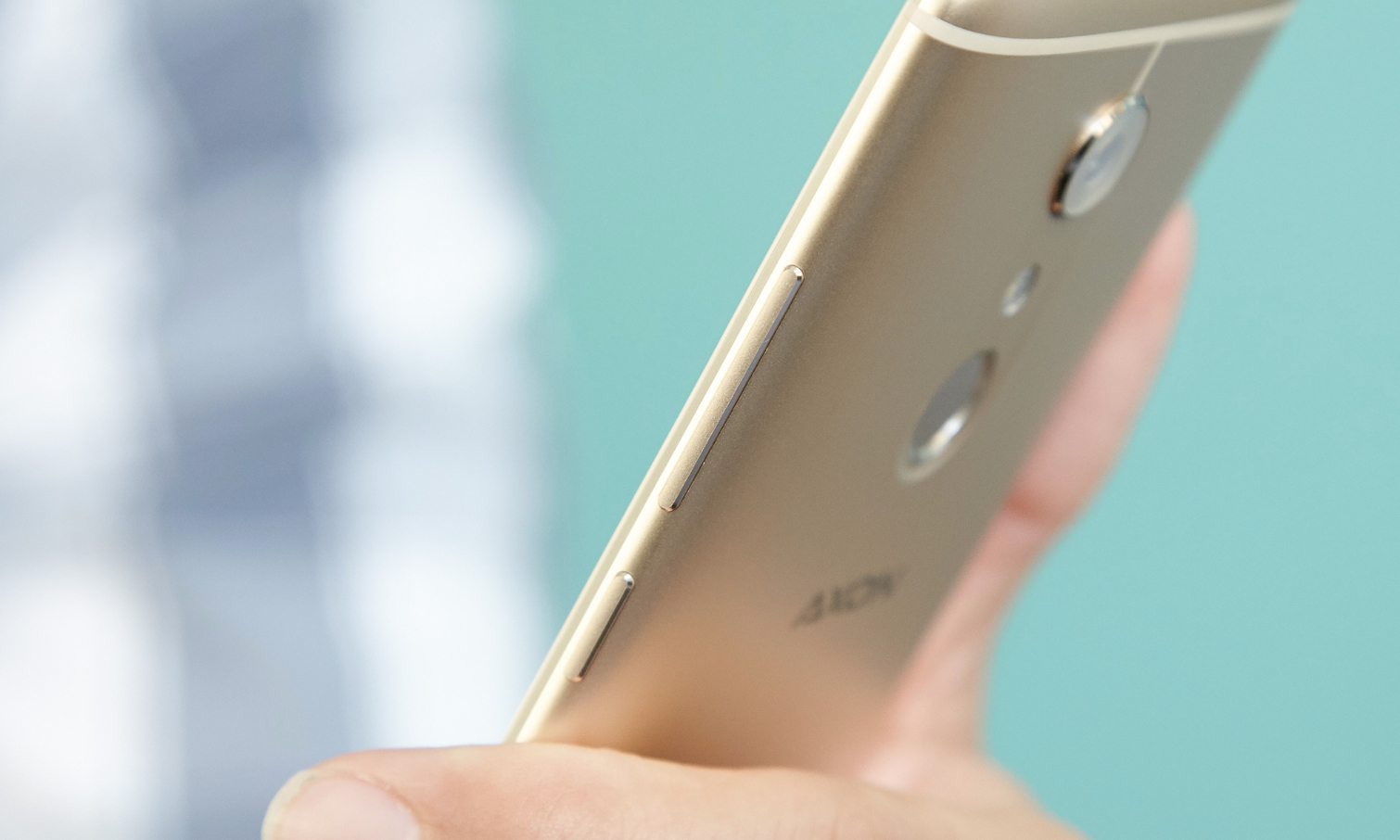
The 6.2-ounce Axon 7 is fairly meaty for a 5.5-inch phone, but its rounded edges make the device comfy to hold. The smartphone's 0.31-inch edges are just barely thicker than those of the iPhone 6s, and are about as skinny as other flagship hopefuls, such as the OnePlus 3 and Alcatel Idol 4s.
Like many newer Android phones, the Axon 7 charges via USB Type C instead of micro USB. Fortunately, there's an included micro USB-to-Type C adapter, so you won't have to throw your old cables in the trash just yet.
Rounding out the Axon 7's luxurious design is a circular fingerprint reader just below the camera on the back panel. Reaching the scanner with my pointer finger was a breeze, and after registering a print, I was able to unlock the phone instantly with just my finger. You can also hold down on the reader to snap photos and answer calls, with both features working well for me.
MORE: Best Smartphones on the Market Now
Display
The Axon 7's 5.5-inch, 2540 x 1400 display is impressively vibrant; even staring at the myriad photographs on the phone's lock screen proved entrancing. The panel made a nice showpiece for the new Wonder Woman trailer, as the colors of the Amazonian's iconic red-and-blue armor and glowing yellow lasso really popped.
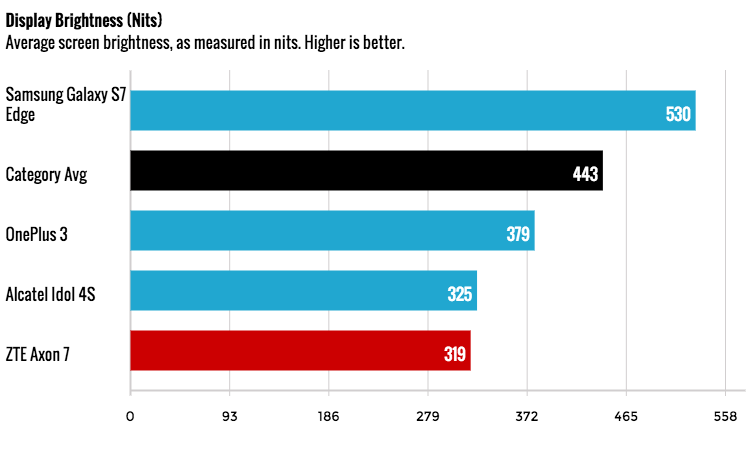
I did wish the Axon 7's display was brighter, however, and our lab tests told a similar story. The phone registered 319 nits of brightness on our test, coming close to the Idol 4S (325 nits) but trailing the OnePlus 3 (379 nits), the ultra-bright Galaxy S7 Edge (530 nits) and our 443-nit category average.
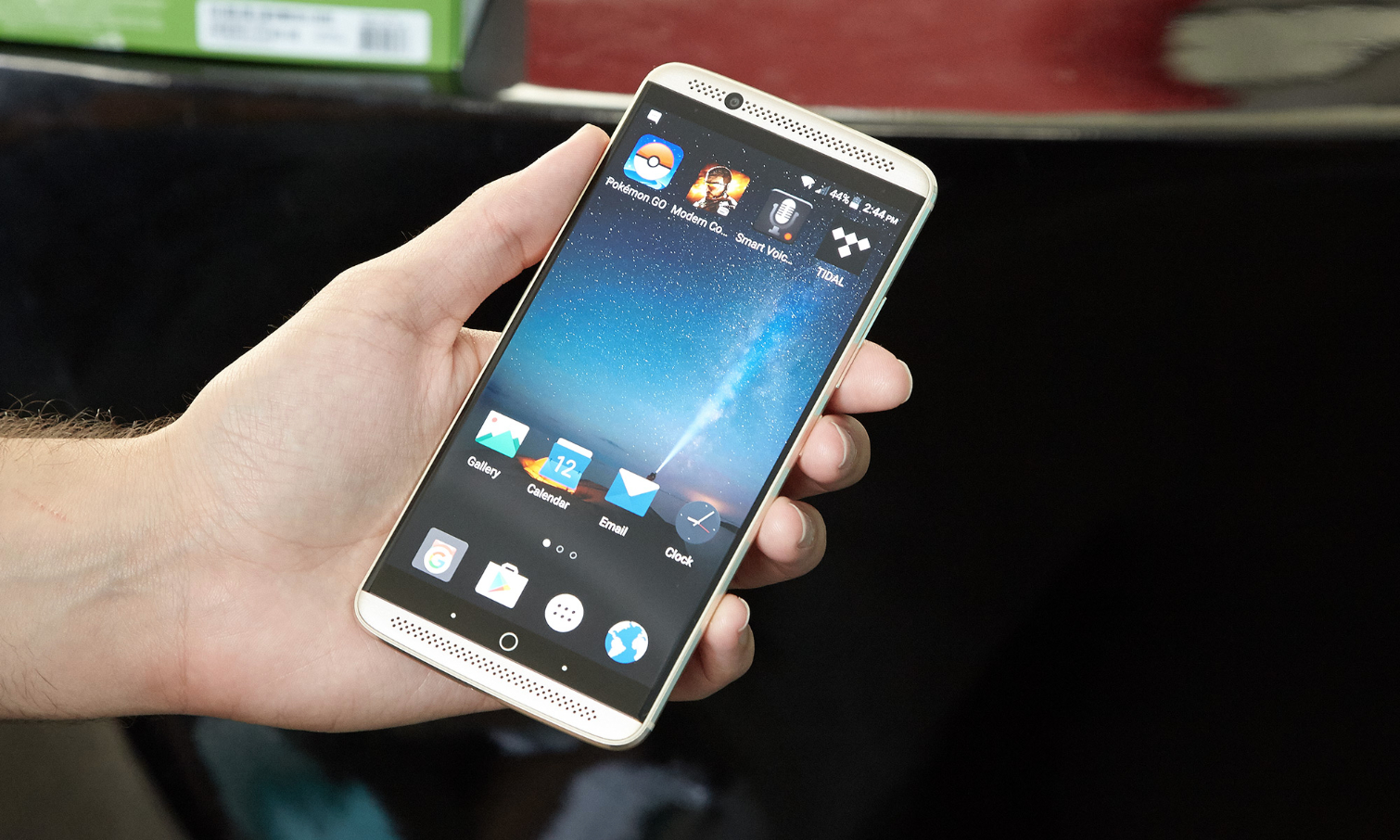
The Axon 7 fared far better in our color tests, producing 182 percent of the sRGB color gamut. That's well above the average smartphone (137 percent), and comparable to the Idol 4S (186 percent), Samsung Galaxy S7 Edge (189 percent) and the OnePlus 3 (192 percent).
ZTE's phone is also relatively color-accurate, with a 2.87 Delta E rating (closer to 0 is better). That's right on the same level as the S7 Edge, the OnePlus 3 and the Idol 4S, and notably better than the 4.07 average.
Audio: Hi-Fi Features, OK Speakers
The Axon 7 sports dual Hi-Fi audio chips, which are designed to please audiophiles looking to hear as much sonic detail as possible. I took advantage of the phone's audio muscle to stream some Hi-Fi tracks on Tidal with headphones on, which allowed Thrice's "Hurricane" to hit extra hard with thick bass and slamming percussion. However, I didn't notice a huge difference when I played the same track in Hi-Fi on my iPhone.
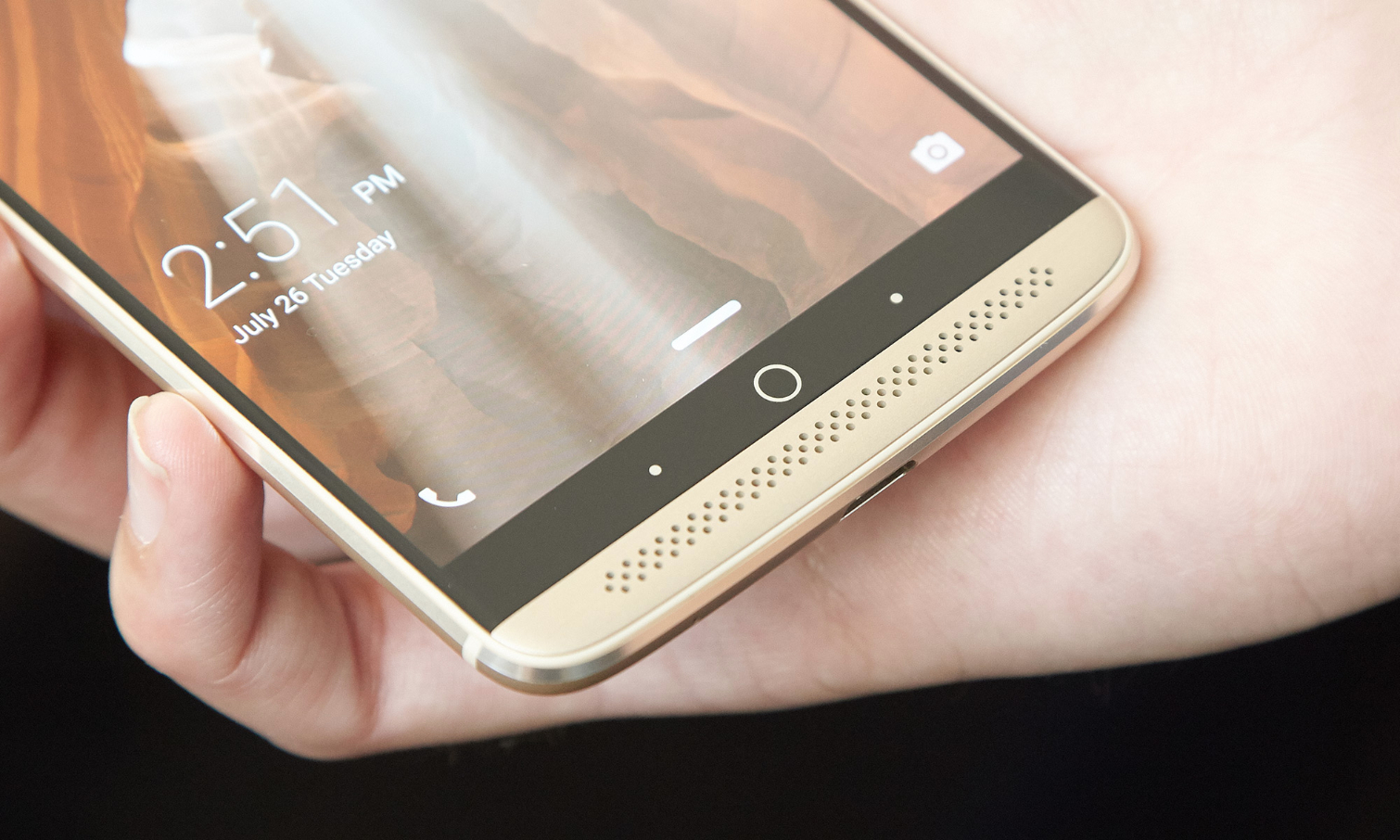
If you don't have headphones handy, the Axon 7's dual Dolby Atmos speakers are loud but offer mixed quality. The phone filled our small TV testing room with the pop-punk vibes of Blink 182's "She's Out of Her Mind," but while the sugary vocals and snappy drums were clear, the bass fell a little flat. Same goes for Kendrick Lamar's "King Kunta," a song whose normally thumping low-end was virtually nonexistent.
Performance
The Axon's quad-core Snapdragon 820 processor made switching and opening apps feel instantaneous, whether I was hopping between multiple Chrome tabs or watching YouTube videos. The console-quality action of Mortal Kombat X played wonderfully on the phone (which features an integrated Adreno 530 GPU), allowing me to mercilessly slice my opponent's face off without any distracting slowdown. I even recorded some gameplay using the Google Play Games app, and the Axon 7 didn't skip a beat.
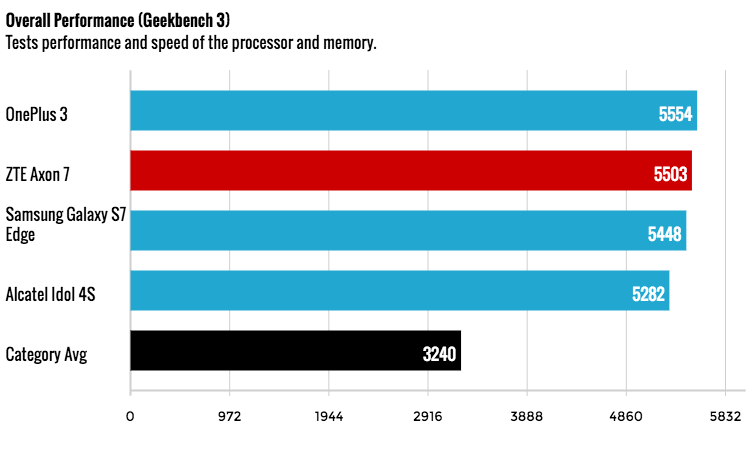
ZTE's phone netted a 5,503 on the Geekbench 3 performance test, which is virtually on a par with the OnePlus 3 (5,554) and the Galaxy S7 Edge (5,448), both of which also pack Snapdragon 820 chips. The Axon performed slightly better than the Snapdragon 652-powered Idol 4S (5,282), and vastly outperformed the average smartphone (3,240).
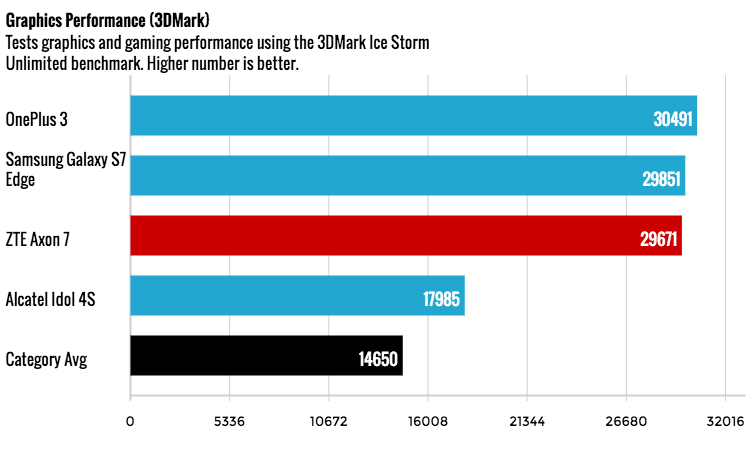
Graphics tests told largely the same story. The Axon 7's 3DMark Ice Storm Unlimited score of 29,671 is in the same playing field as the OnePlus 3 (30,491) and the S7 Edge (29,851), and notably better than the Idol 4S (17,985) and our 14,650 average.
MORE: Best Cheap Unlocked Smartphones
Camera Performance

The Axon 7's 20-megapixel rear camera did a stunningly good job in my testing. Photos I took out in New York's Madison Square Park looked detailed and vibrant, from the deep blues of the sky to the lush greens of a set of towering trees.

The camera proved just as impressive when I focused on a bed of flowers, whose purple and pink petals looked colorful and true to life. I could make out the individual crinkles of each leaf, and my photos remained crisp even as I zoomed in on my monitor.

ZTE's phone made a shot of my girlfriend in a dark Starbucks corner look as bright as day, but, again, there was a slight bit of graininess. Fortunately, the phone's flash remedied this, highlighting each of her individual freckles without blowing the whole shot out.
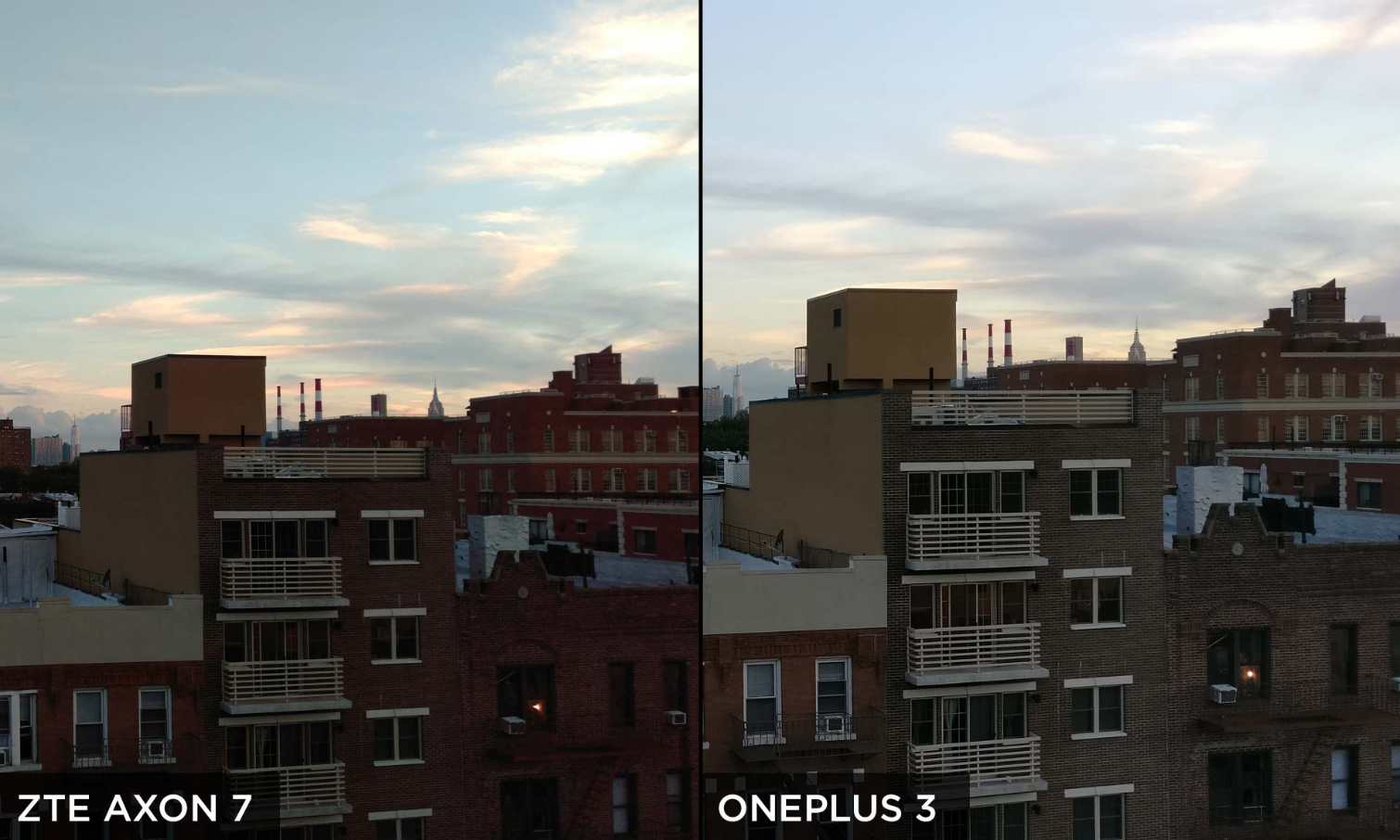
I took the Axon 7, the OnePlus 3 and the Idol 4s on my balcony to determine which had the best outdoor and low-light performance. All three did an impressive job capturing a cloudy New York City skyline, but the OnePlus 3's strikingly true-to-life colors made the Axon 7's shots look saturated by comparison.
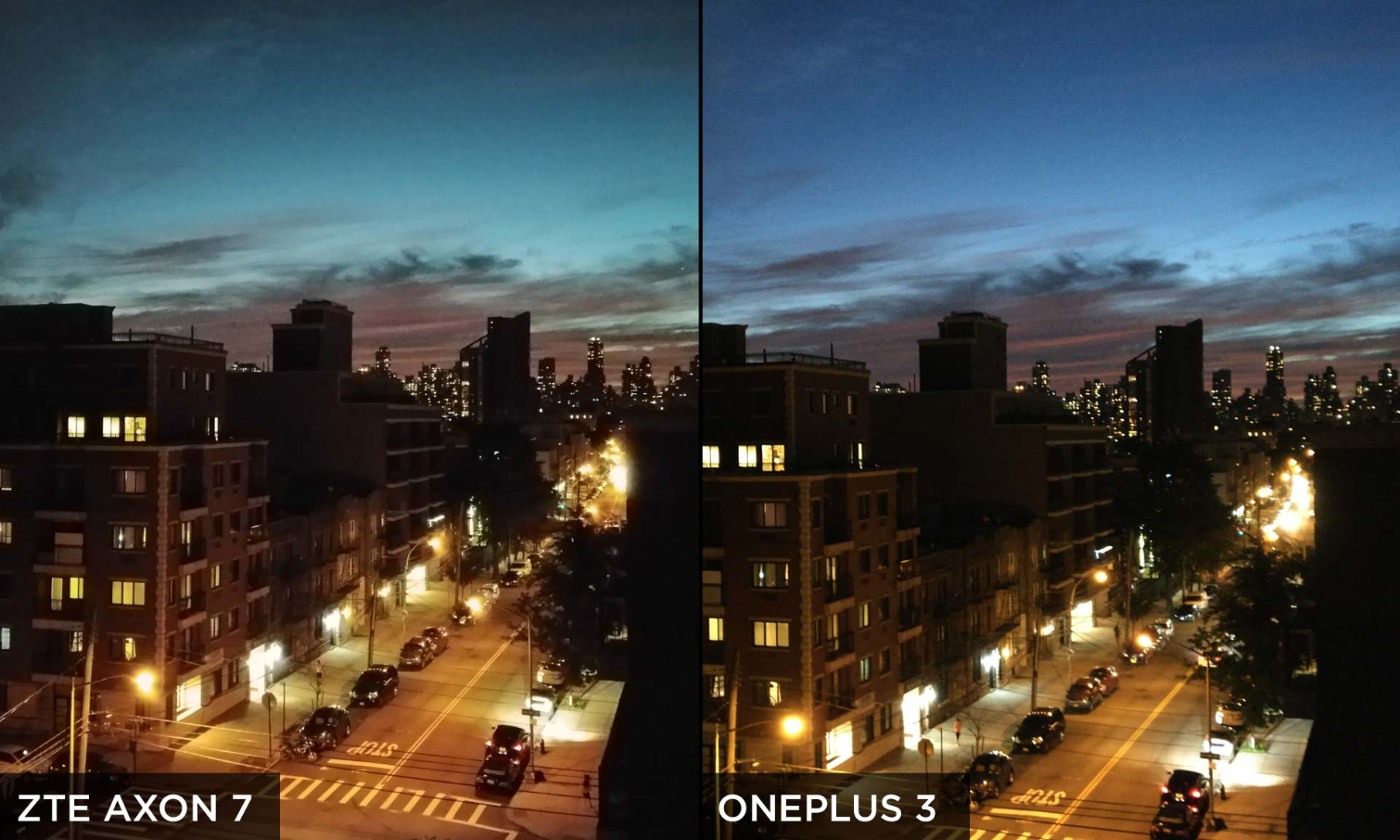
The OnePlus 3 once again reigned supreme when I shot the same scene at night, producing slightly brighter and crisper shots than the Axon 7 (the Idol 4s' low-light shots were borderline unviewable by comparison). I found the Axon 7's flash the most impressive, however, as it made a set of plants on my balcony look richer and sharper than the OnePlus 3's did.

The Axon 7's 8-MP front camera takes decent selfies, but my shots looked pale and a bit pixelated. The OnePlus 3 proved far more impressive here, snapping self-portraits that preserved my birthmarks and stubbles of facial hair with sharp detail. ZTE's phone has a beauty mode that lets you choose how puffy and ghastly you want to look on a scale of 1 to 5, as well as a smile-activated shutter that worked pretty reliably for me.
Camera Features and Video
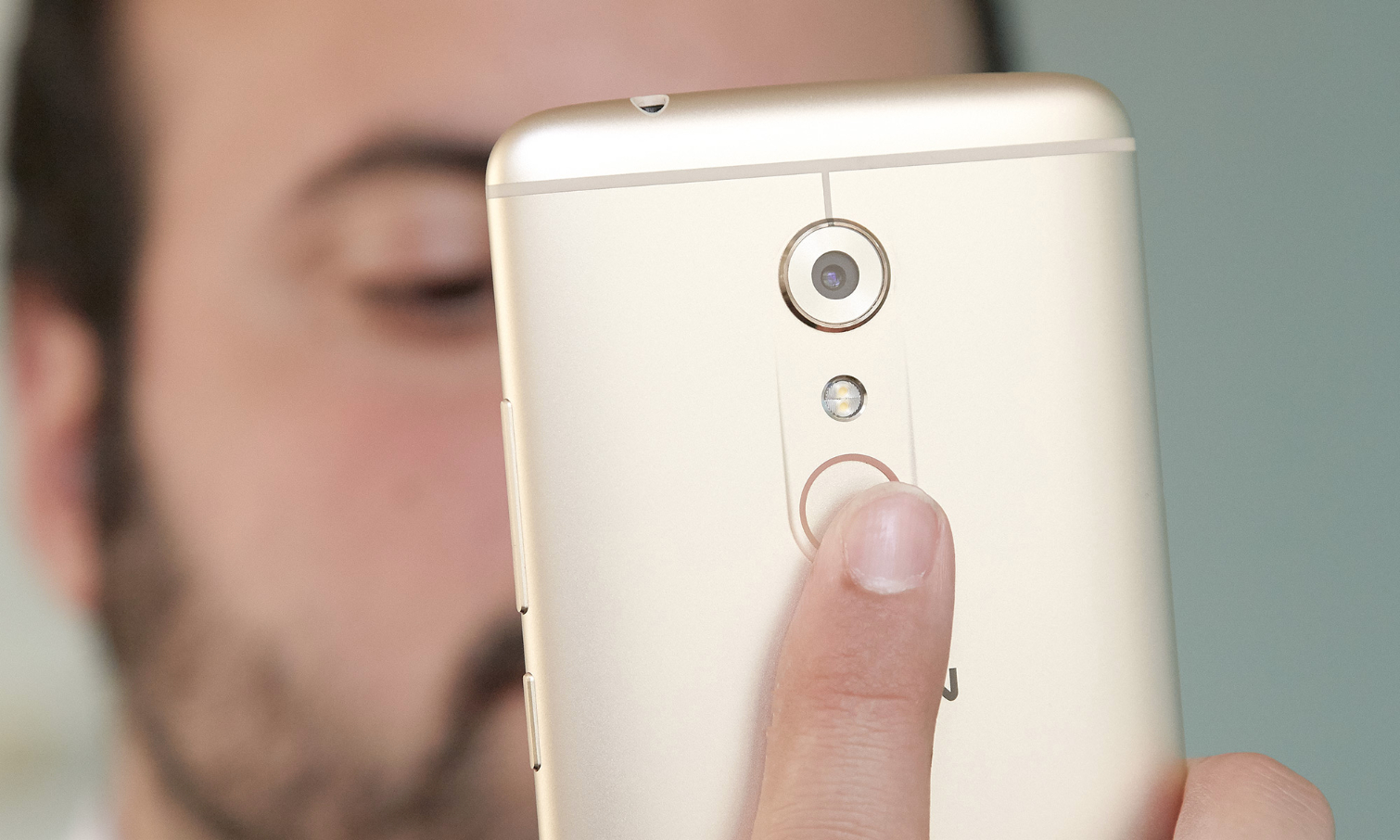
The Axon 7's camera is replete with extra features, including a DSLR-like manual mode. Here, you can manually tweak shutter speeds, ISO, white balance, exposure and focus, giving mobile photo nuts plenty of control over getting the perfect shot.
Taking some not-so-subtle cues from the iPhone 6s, the Axon 7 also features a Live Photo mode that creates GIF-like images by capturing a few seconds after your shot. Just like on the iPhone, you can toggle the mode just by tapping a Live icon on the camera interface.
I really like that a circle wraps around the shutter icon on the Axon to let you know exactly which seconds were captured — the iPhone simply captures a quick moment before and after you press the shutter button. The Axon's Live Photos were comparable to the iPhone 6s' in quality, though I couldn't view the animated versions when viewing them on other mobile devices. (They did, however, show up as two-second videos in my Google Drive.) Apple's Live Photos, on the other hand, can be shared directly to Facebook and converted to GIFs via third-party tools.
ZTE's phone can shoot video at up to 4K, and does a pretty good job at it to boot. When looking at my ultra-HD videos of a busy Manhattan street, I could easily make out every bit of text I saw from storefront logos to bus decals, and the clip stayed steady even when there were tons of vehicles whizzing by. More important, colors looked as vibrant as they did in my photos.
Handy Interface with Minimal Bloat
The Axon 7 uses ZTE's MiFavor 4.0 interface, which adds some neat aesthetic touches and extra features to what is otherwise a pretty pure Android Marshmallow experience. I'm a big fan of the phone's default lock screen, which presents random, gorgeous stock photos that you can swap out by simply swapping left or right.
You can enable a handful of gesture controls, such as double-tapping the phone to wake it from sleep or performing a three-finger pinch to take a screenshot (in case you accidentally lock your phone every time you try taking screens with the side buttons).
MORE: The Best Cheap Unlocked Smartphones
The phone's Mi-Pop feature allows you to navigate the device using big, digital on-screen icons, which could be useful for those who have a hard time seeing or using the capacitive buttons at the bottom of the phone's bezel. You can activate voice controls for things such as playing music and taking photos, and can even lock the phone to a spoken password.
Fortunately, the MiFavor interface doesn't bring any annoying bloatware with it. The only notable extra app I noticed was ZTE Rewards, which lets you earn points for doing things like taking surveys and telling your Facebook friends about how much you love your ZTE phone, and then redeem those points for gift cards.
Battery Life
The Axon 7's OK battery life is just about the only thing that holds it back from being a true flagship killer. The phone lasted 7 hours and 57 minutes on our battery test — that's enough to get you through most of the day, but was notably shorter than the Idol 4s (9:09), the Galaxy S7 (10:09) and our smartphone average (8:44).
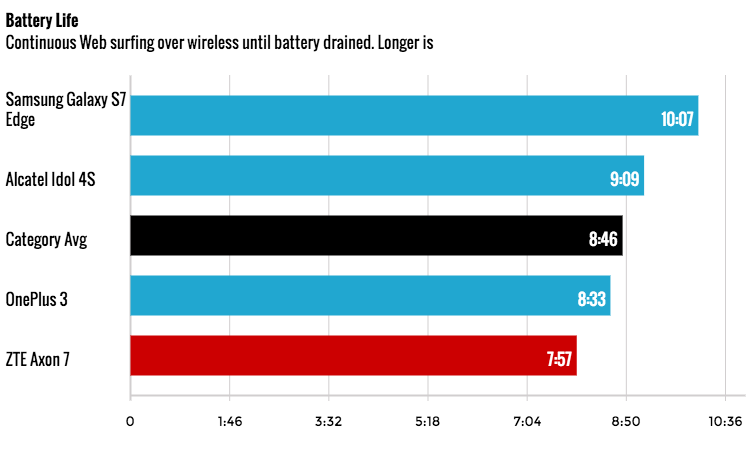
ZTE's phone also trailed the OnePlus 3 (8:33), which features a 4-amp Dash Charge adapter for juicing up extra-quick. You can't remove the Axon 7's battery pack, but it does support Quick Charge 3.0, which means it should charge up about four times faster than the average phone.
Axon 7 vs. OnePlus 3 vs. Idol 4S: Which Is the Ultimate Flagship Killer?
It's impossible not to constantly compare the Axon 7 to the OnePlus 3 and the Alcatel Idol 4S —after all, all three phones offer a flagship-quality experience for less than $400.
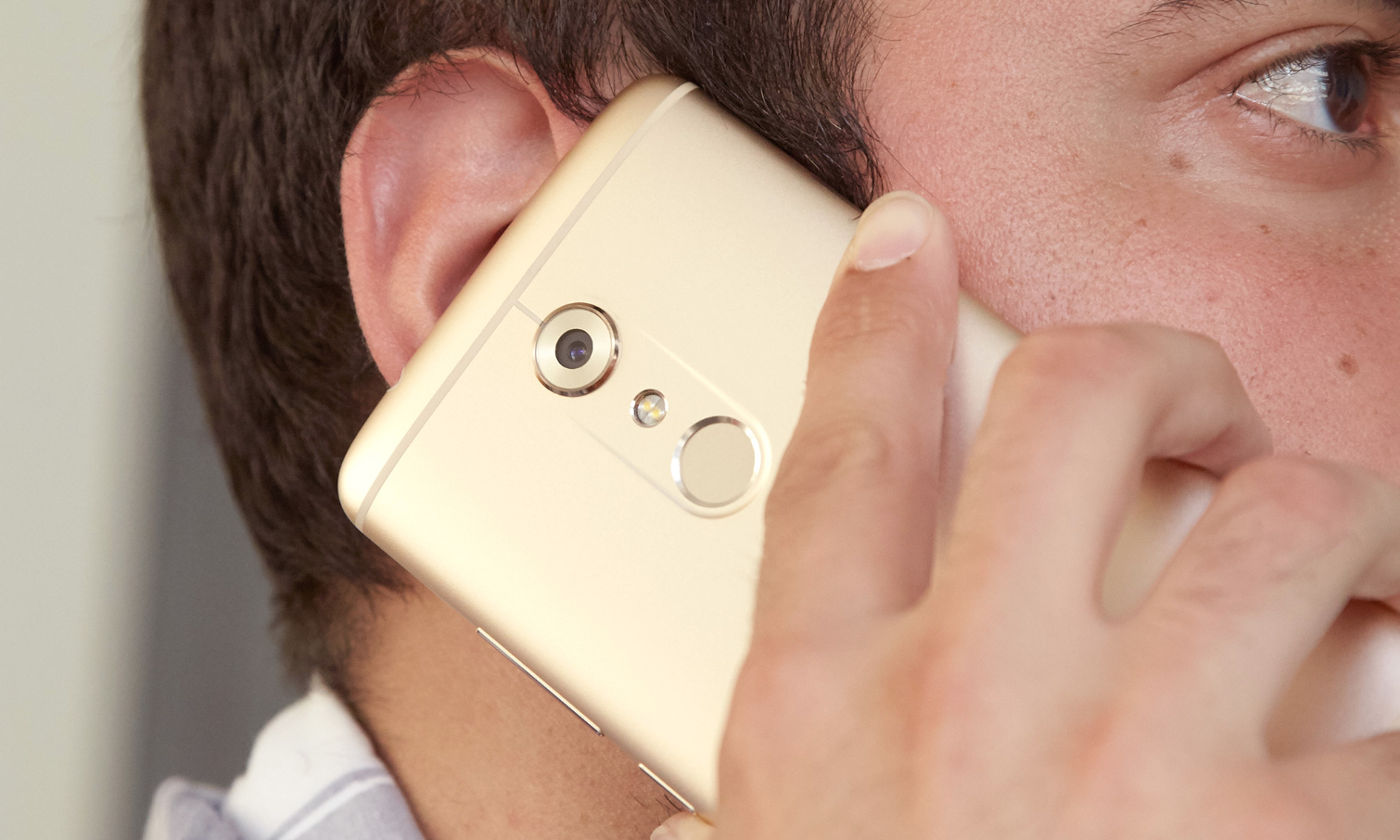
In terms of design, the Axon 7 is the clear winner. The OnePlus 3's aluminum body certainly looks and feels premium, but I prefer the Axon's curvier, more ergonomic design. The Idol 4S's dual-glass panels give it a pleasant, Galaxy-inspired design, but the rear panel is prone to smudges, and the phone just doesn't feel as sturdy or substantial.
All three phones take excellent outdoor daytime shots, and all three have their problems with low light. The Axon and Idol 4S are replete with extra features for photo nuts, but the OnePlus 3 was consistently the most impressive; OnePlusꞌ phone also reigns as the best selfie-taker.
The OnePlus 3 is the most enticing of the three for power users, thanks to its industry-first 6GB of RAM. Still, the Axon 7 proved comparably speedy in our tests. The Axon and the Idol 4S both have the edge in terms of display resolution (2560 x 1440 versus the OnePlus 3's 1920 x 1080), but the OnePlus 3's screen is the brightest of the bunch and still plenty colorful.
MORE: How to Reduce Data Usage on Your Smartphone
Despite being a bit weaker than the competition, the Idol 4S is the best overall value in terms of what's in the box. The phone includes a VR headset, an Incipio case and a pair of JBL headphones, and can be had for just $349 if you order before Aug. 3; the prices rises to $399 after that. Alcatel’s phone also lasted longer than both the OnePlus 3 and Axon 7 on our battery test.
Bottom Line
I'm still not convinced that the ZTE Axon 7's $399 price tag isn't a typo. This smartphone performs like something that costs hundreds of dollars more, with a fast processor, a rich display and a stunning design that oozes care and quality. The phone's MiFavor interface adds some nice software touches without getting in the way, while its 20-megapixel camera takes gorgeous outdoor photos complete with plenty of tools for photography nuts.
The Axon 7 does stumble a bit when it comes to low-light shots, and its loud speakers don't always offer the best bass. The OnePlus 3 and Alcatel Idol 4s are both worthy alternatives — the former for its whopping 6GB of RAM, the latter for its bundled-in VR headset — and both offer better battery life. The OnePlus 3 is still our favorite sub-$400 phone out there, but the Axon 7 is an extremely close second.
Mike Andronico is Senior Writer at CNNUnderscored. He was formerly Managing Editor at Tom's Guide, where he wrote extensively on gaming, as well as running the show on the news front. When not at work, you can usually catch him playing Street Fighter, devouring Twitch streams and trying to convince people that Hawkeye is the best Avenger.
-
Niknud You mention the speakers being mixed because it doesn't offer amazing bass. Can you suggest a phone that does offer front-facing hi-fi stereo speakers with good bass? Thanks.Reply -
Sublimation77 Your review is mostly on point, but the strongest thing about the axon 7 is the speakers, your not going to get a lot of bass out of a smartphone unfortunately. But the speakers of the axon 7 blow away the htc one m9, which is significantly better then iPhone 6s. Not trying to sound like a dick but... you either got a defective unit or need to get your ears checked man. The audio is phenomenal, I have a 5.1 surround setup in my living room, bedroom, and my car has top of the line pioneer with amp for highs and amp for my 12" subwoofer. And with that being said, this phone sounds AMAZING, even compared to cheap standalone speakers, there is simply NO COMPARISON to any other US smartphone. I've been using my axon 7 to play Lukas Graham while I game on my PC instead of using my 5.1 system. I'm not saying the phone sounds better then that, but it is 100% acceptable for vocal driven music.Reply -
OrdinaryGeek I'm quite disappointed to see that the screen brightness on the Axon 7 is so low. Outdoor visibility in direct sunlight is an important criteria for me. This coupled with the unlit navigation keys are enough to make me reconsider this phone (I currently have one on preorder). I'm beginning to think I might be better served by a (significantly more expensive, and loaded with bloatware) S7 or S7 Edge. Oh, and the others who commented here are correct: You did mix up the terms "former" and "latter" at the end of your review, and I don't think you're being fair to the Axon 7's speakers. It is a PHONE, after all. Not a standalone Bluetooth speaker. At that size, you're really not going to get much bass. I'm not sure what you were expecting. You should compare the sound to the Idol 4s, the Nexus 6p, the Moto X Pure, the HTC 10 or M9. I mean you did mention that you didn't hear much difference between the Axon 7's speakers and your iPhone, so there's that, I guess. But as far as bass goes, can you name us a phone that delivers the bass response you expect from its built-in speaker(s)?Reply

